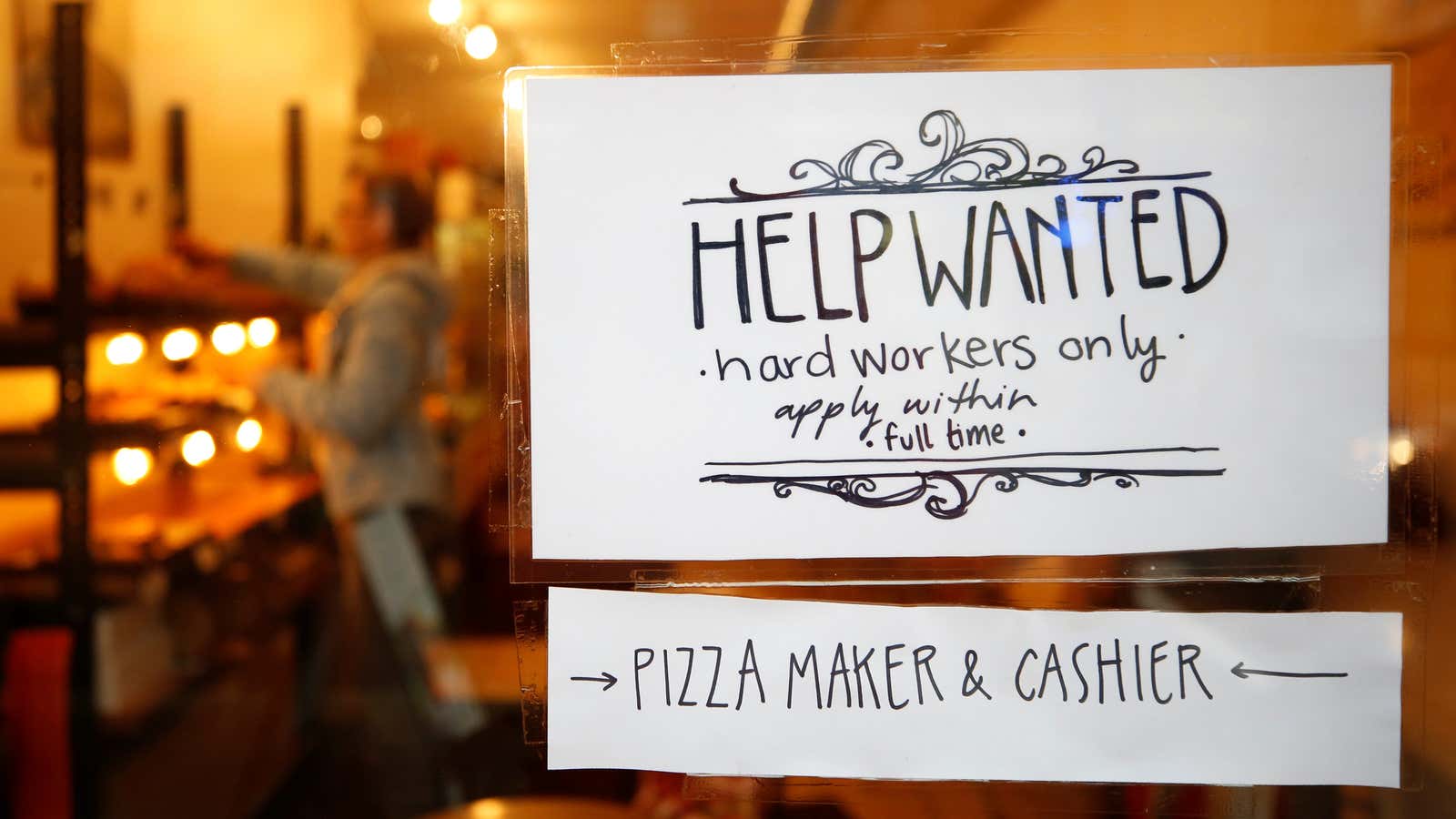What happened to all the workers? This seems to be the question on the minds of many these days as US business owners worry about labor shortages, fret about rising wages contributing to inflation, and consider the causes of the so-called Great Resignation.
Despite all the punditry, it’s not that complicated: Just look at what actually happened to workers over the past two years.
Let’s start with spring of 2020. Tens of millions (pdf) of workers lost their jobs practically overnight. Losing a job is a traumatic event in a person’s life, at any pay level. And working people have little protection from this calamity. Employment contracts in the US are predominantly at-will, so any working person (with the exception of the 11.6% of US workers represented by a union) can lose their job with no notice and no reason given. For business, that allows great flexibility in managing labor costs and overall financial performance. Faced the unprecedented uncertainties of the pandemic, businesses responded by cutting labor costs and firing workers.
Next the public sector, namely the unemployment insurance system, showed its weaknesses with terrible consequences for many working people. The patchwork of state administrative systems were decades out of date and unable to respond to the volume of claims. Meanwhile, benefit levels in most states were too low to cover basic household expenses, and many workers such as independent contractors (e.g. Uber drivers) and low-wage workers in the hospitality industries were left out. Congress enacted Pandemic Unemployment Assistance, but inadequate systems still left tens of thousands of workers with long waits for benefits and struggling with the resultant financial stress, debt, and other problems.
It is also worth keeping in mind that the primary response of the business community to expanded unemployment assistance was a complaint that benefits were more than the inadequate wages many businesses had become accustomed to paying.
The emotional and financial trauma of sudden job loss happens regularly to working people, but it doesn’t usually happen to so many all at once
The millions of workers who were thrown out of work with no notice or severance payment or goodbye party were predominantly lower-wage workers in industries like retail, food service, and hospitality—workers with no financial cushion.
So what happened next? Millions of former workers around the country found themselves in food lines, some literally a mile long. Why? Because most work pays so little, that households are always on the edge. Just prior to the pandemic, researchers at the Brookings Institute found that 44% of workers ages 18 to 64, more than 53 million people, earn low hourly wages.
Millions of other workers—essential workers—continued to work. People who worked in nursing homes and hospitals, groceries stores and food processing facilities, as bus drivers and delivery drivers, suddenly found their jobs had become more difficult and more dangerous. Essential workers died at elevated rates and had few supports to help them manage the fear of getting a deadly new disease, their concerns about infecting loved ones, and the trauma of losing co-workers, friends, and family members. Just getting a modest amount of hazard pay and some paid sick leave was a struggle.
And then there are the millions of unpaid workers whose work at home also became much more difficult, too. Parents need to balance paid work with their unpaid work of care for our country’s future, and they generally do this with the support of schools, child care centers, summer camps and other services that were suddenly unavailable or unaffordable. The upheaval had a disproportionate impact on women, millions of whom still have not made it back into the workforce.
It is unsurprising that the burdens of the pandemic fell heaviest on frontline workers
The US has let its standards and protections for workers erode for decades. We are singular among developed economies in our lack of paid leave, our meager support for child care, and other policies that would have ameliorated some of the hardships workers experienced in the pandemic. The federal minimum wage hasn’t been adjusted in over a decade, and minimum wage workers across the country cannot afford the basics of life.
US policymaking has not been responsive to the interests of working people for a very long time. Business interests have taken precedence, selling the idea that what’s good for business will be good for workers. But recent experience with the Paycheck Protection Program is just the latest example of the fallacy of that thinking. Meanwhile, the Child Tax Credit was extraordinarily successful in reducing child poverty without discouraging participation in work—but nonetheless was deemed unsustainable according to our business-centric policymaking ideology.
So what happened to US workers?
If employers, policymakers, and pundits are wondering what happened to all the workers, they should start by remembering what happened to all the workers. They should recognize that the incredible traumas that the pandemic inflicted on the US workforce came on top of a steady accretion of “business friendly” policies and shareholder-focused corporate practices that have been undermining wages and working conditions for decades.
The best way to bring people back to work would be to make work better, putting the policies and practices in place to make sure that what happened to all the workers never happens again.
Maureen Conway is vice president and executive director of the Economic Opportunities Program at the Aspen Institute.
